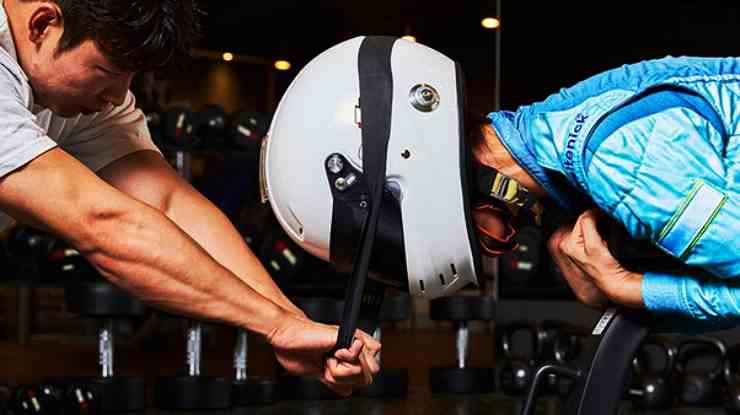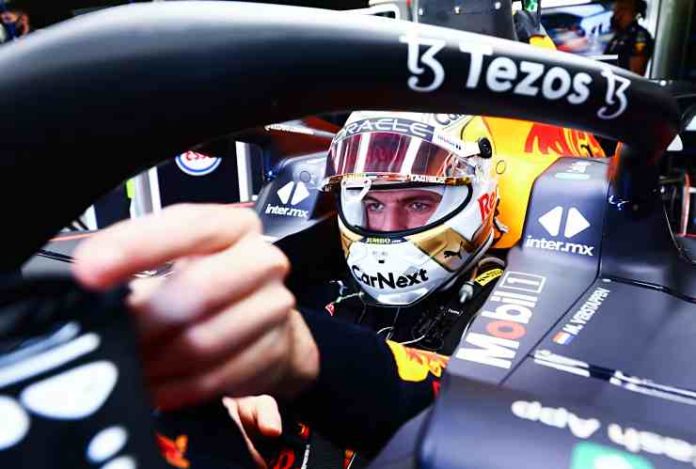Sorry, but most of us are far from the physical and mental fitness needed to drive a Formula One car.
Every automotive enthusiast who loves racing has thought, “Would I be a good driver? Surely I can beat these guys with some training!” Now, us being true car buffs, we know that it would be pretty amazing if everyone could become an F1 driver. However, the reality is far from this.
Although it has a lot to do with the financial side of things, more than that, it is about the sheer physical and mental abilities you need to possess. This sport demands skills that are beyond the capabilities of the average person. So today, we thought we should bring to you the reasons why most people are physically and mentally unprepared to handle the rigors of driving an F1 car.
Cognitive and Physical Demands
Cognitive Skills
The first and most important thing that an F1 driver must possess is the cognitive capabilities of a chess grandmaster. Yes, you heard that right. As weird as it may sound, the ability to make split-second decisions under extreme pressure is essential.
These drivers need to process vast amounts of information extremely quickly. After this, they also have to react to these changes in milliseconds. The average human reaction time hovers around 500-600 milliseconds, whereas an F1 driver’s reaction time is about 200 milliseconds. This sharp difference is extremely crucial when driving an F1 car at speeds exceeding 200 mph or 320 kmph.
Physical Endurance
It may not seem so apparent from a camera, but the physical demands of driving an F1 car are immense. Drivers need the endurance of a marathon runner. They need to sustain high levels of physical activity for the entirety of the race.
A number of the races in the F1 Calendar can last up to two hours. So the physical endurance that we are talking about is not just about the ability to stay awake or alert. It is about maintaining peak physical condition to handle the car’s demands consistently.
Training and Reflexes

Image
Reaction Time
Another one of the most important aspects of being an F1 driver is the reaction time. It is extremely critical in F1 racing as things can change in a matter of milliseconds. F1 drivers train their reflexes rigorously, using exercises designed to enhance their response times.
One popular exercise involves tapping lights as quickly as possible. The current record for this exercise is held by 2009 Formula 1 champion Jenson Button, who raced for Brawn GP. He averaged two lights per second. These quick reflexes are necessary to avoid collisions and maintain optimal performance on the track.
High-Speed Corners
Each and every track around the globe has high-speed corners. Especially tracks like Silverstone feature high-speed corners that test a driver’s ability to make precise and rapid directional changes while maintaining control of the car. The G-forces experienced during these maneuvers can be extreme. Hence, they require both mental acuity and physical fitness.
Neck and Muscle Strength

Neck Muscles
Coming to the strengths needed in certain parts of the body, one of the most important parts is the neck of the driver. The G-forces exerted on an F1 driver’s body during a race are immense, particularly on the neck. The average person would struggle to support their head under these conditions. Most of us will not be able to control our heads and necks during hard breaking.
Drivers like 7-time world champion Lewis Hamilton and 2-time world champion Fernando Alonso have necks with circumferences of 18 inches. These are three inches more than the average man’s 15 inches.
Overall Muscle Strength
Apart from the neck, an extreme amount of leg strength is also required when trying to stop an F1 car. The brake pedal must be stamped on with a force almost equal to 100 kilograms repeatedly using one leg.
This action engages all the major leg muscles, including the quadriceps, hamstrings, glutes, and calves. Without this level of strength, a driver would be unable to control the car effectively, especially during sharp turns.
Heat and Endurance

Image
Extreme Temperatures
You may think that we are finished with the requirements needed to become an F1 driver. However, there’s more. During a race, the cockpit of an F1 car can reach extreme temperatures. Track temperatures can even soar up to 50 degrees Celsius.
The tires run at 100 degrees Celsius and the brakes at a staggering 1,000 degrees Celsius. Yes, you read that right. So each and every driver must endure these conditions while maintaining peak performance. Because of this, they even lose three to five percent of their body weight through sweat during a race.
Cardiovascular Fitness
As you may have guessed by now, maintaining a heart rate of 170-180 beats per minute for the duration of the race requires the cardiovascular fitness of an elite marathon runner. This high level of cardio conditioning helps drivers regulate their body temperature and sustain their physical performance throughout the race.
Physical Characteristics

Image
Weight and Body Composition
Each and every F1 driver is typically lean and light, weighing less than 70 kilograms. They need to have less than 12% body fat. This lean physique helps in managing the heat and physical stress of racing.
A person weighing 90 kilograms with 20% body fat would struggle to cope with the harsh conditions. Their physical condition would make them lose focus and reaction speed in the final laps.
So what did we understand?

We think that with the help of the above parameters, you may have understood that the dream of yours and mine of becoming a Formula 1 driver is over before it began. You must have also understood by now it requires extraordinary physical and mental resilience to drive an F1 car.
This is why this sport is beyond the reach of most people. So the next time you watch an F1 race, remember that behind the thrilling speeds and dramatic turns, there is a level of human capability that only a few can achieve.
The post You Are Too Physically Weak To Drive An F1 car: We Explain first appeared on Cartoq.
Source link

